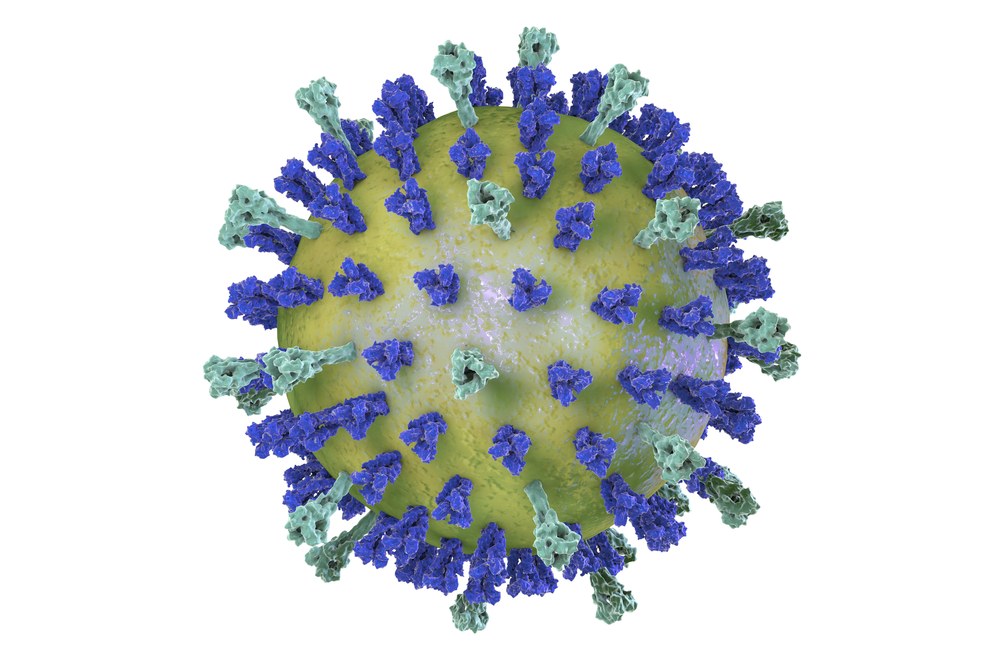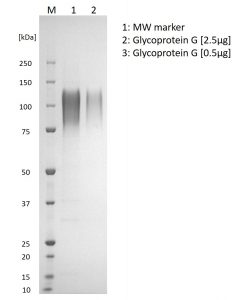RESPIRATORY SYNCYTIAL VIRUS A GLYCOPROTEIN G, MOUSE FC-TAG
This Human RSV (A) glycoprotein G comprises amino acids 67-298 of the major glycoprotein of RSV. It contains a C-terminal mouse IgG2a Fc-tag with a 15 AA glycine-serine linker.
PRODUCT DETAILS – RESPIRATORY SYNCYTIAL VIRUS A GLYCOPROTEIN G, MOUSE FC-TAG
- Recombinant RSV A glycoprotein G expressed from HEK293 cells (NCBI Accession Number: P20895.2).
- Includes amino acids 67-298 and a C-terminal mouse IgG2a Fc-tag.
- Greater than 95% purity by SDS-PAGE and buffered in DPBS, pH7.4.
BACKGROUND
Human Respiratory Syncytial Virus (RSV) is a single-stranded RNA virus, which was first isolated in 1956 from a laboratory chimpanzee with a respiratory illness and was later discovered to be of human origin. RSV consists of two antigenic subtypes, A and B. Subtype B tend to produce asymptomatic infections, whilst the more severe illnesses which predominate during outbreaks are associated with subtype A strains. RSV is the leading cause of lower respiratory tract infections, including pneumonia and bronchiolitis in young infants. Approximately two thirds of infants are infected with RSV within their first year and 90% have been infected by the age of 2. It may cause mortality or morbidity in the elderly as well as immunodeficient individuals. It is the most common pathogen leading to hospitalization in young children up to the age of 5.
The virion of Respiratory Syncytial Virus (RSV) contains three surface glycoproteins, the attachment protein G, fusion protein F, and the small hydrophobic SH protein. Glycoprotein G is a type II transmembrane glycoprotein and is the major RSV attachment protein. It contains a single hydrophobic region which serves as a signal peptide and also as a membrane anchor. The structure and function of RSV glycoproteins has been reviewed by McClellan et al (2013).


